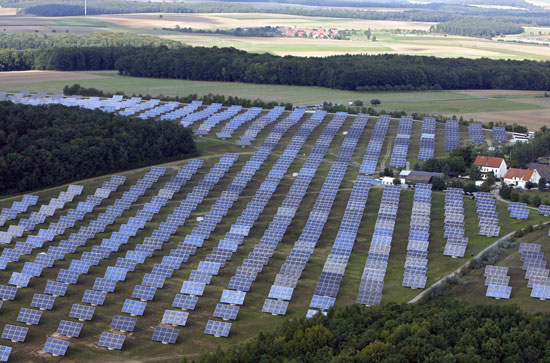Germany set a record for solar energy: 22 GWh

Germany has set a new world record for the flow of energy from solar panels. On Friday and Saturday, midday hours on May 25 and 26, 22 GWh of photovoltaic power flowed into the German power grid. This is about a third of Germany’s midday consumption on a working day and almost half a day off.
Thus, Germany has proven that renewable energy sources can cover a substantial part of the needs of even such a large industrial country.
“Never before has any country in the world generated so much electricity from photovoltaic equipment,” said Norbert Allnoch, director of the Institute for the Renewable Energy Industry in Münster. “Germany has come close to 20 GWh several times in recent weeks, but now we have crossed this mark for the first time.” Last year, the German record was 14 GWh.
')
Germany used to be considered one of the world leaders in the production of nuclear electricity (140 GWh / year), but after the accident at Fukushima last year, the government decided to completely abandon nuclear power plants. Eight stations were closed immediately, and the remaining nine are planned to be closed until 2022.
Now Germany is considered to be one of the world leaders in the production of non-nuclear, and renewable energy: the country receives from these sources about 20% of the necessary electricity. In Germany, about as many solar power plants are installed as in all other countries of the world combined. Naturally, for this reason, Germany is among the countries with the most expensive electricity tariffs: about 18 euro cents per 1 kWh.
Source: https://habr.com/ru/post/144636/
All Articles